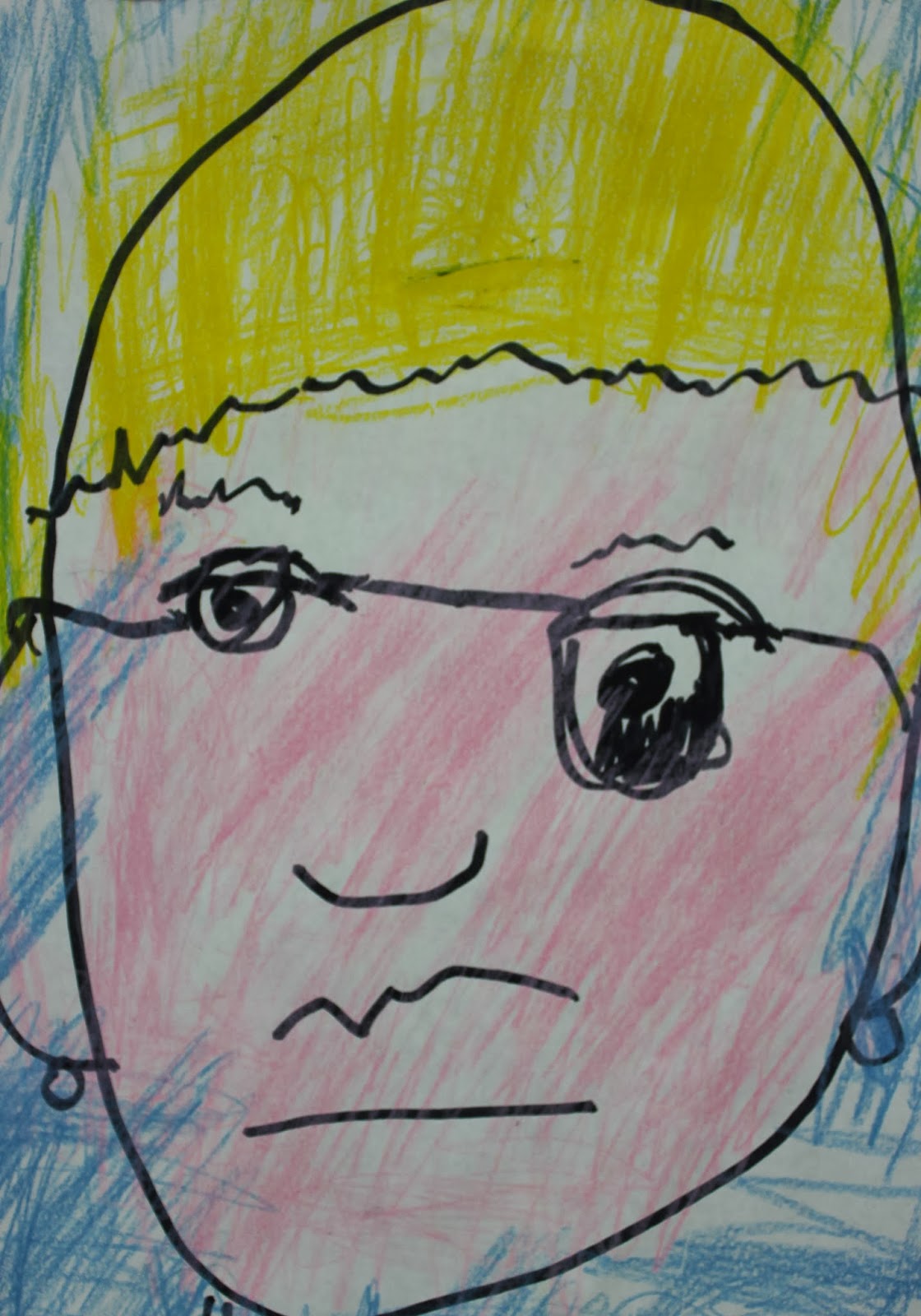When something is amiss they might say, "That doesn't look right," and when they understand what I'm talking about, they say, "I see."
The fact that their eyes don't work perfectly, doesn't mean they have to use a different phrases then sighted people. They live in the same world, and deserve to understand what people are talking about when they make references to art. They also deserve to try their hand at art projects. Art, after all, is for everyone.
I recently had my students empty their portfolios onto the wall for a critique. It is so fun to track
their progress and how see much they've accomplished in the last few months.
I had each student pose in front of their work while I took their pictures. I can't share the photos of them, but I can share a few of their self portraits.
This student used wiki sticks to "see" his "drawing" as he worked.
Tessellation projects are are a favorite way to teach math/art concepts of perimeter, shape and pattern. I have a slide lecture of M.C. Escher images that I describe in detail to those who can't see, and then they used wiki sticks to trace the templates they made.
Observational concepts such as linear perspective and use of value to show three dimensions were tackled by my low vision students.
Right before winter break, we studied Andy Warhol before doing screen prints of snow flakes. And we learned a little about Frank Lloyd Wright and architecture before building and decorating graham cracker houses.













No comments:
Post a Comment